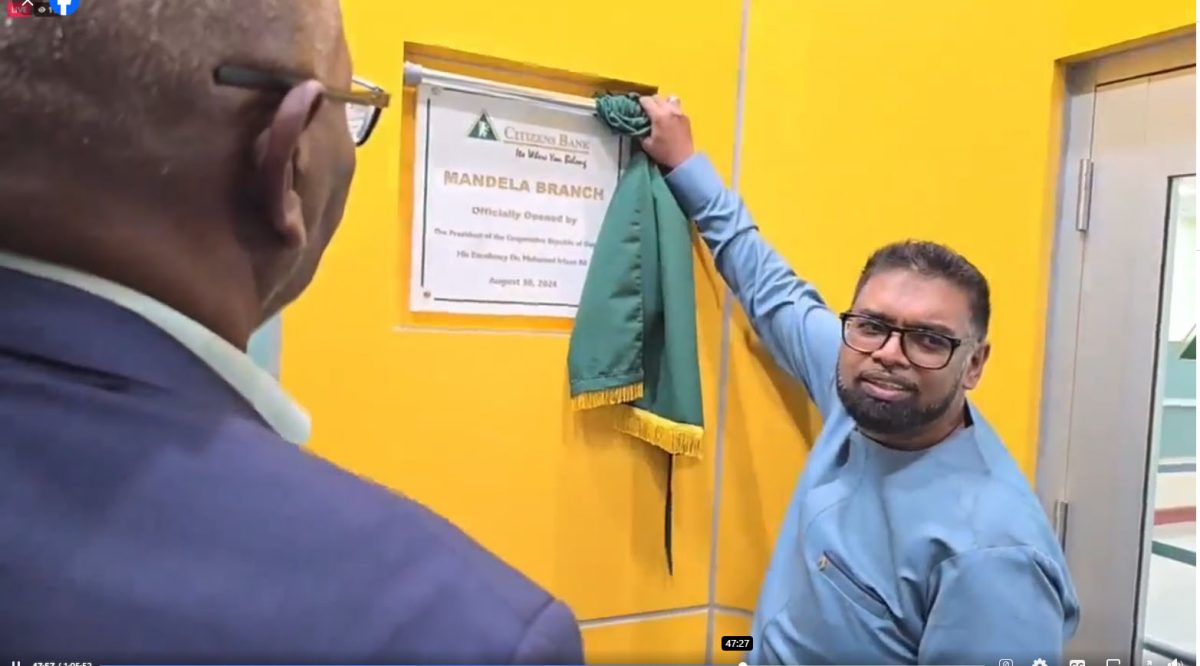Citizens Bank Guyana Inc on Friday opened its newest location on Aubrey Barker Road to the tune of $1.8b and it will officially come into operation tomorrow.
Managing Director of Citizens Bank, Eton Chester explained that the branch once operated in a 718 square feet building within the area, however, over the years they outgrew that space which was affecting their ability to provide the most efficient, convenient and consistently high service to their customers.
As such, the search for a suitable location commenced which resulted in them finding this spot which will still allow them to serve the catchment area.
The state-of-the-art building, construction of which commenced in 2020, has three floors and with the inclusion of the utility buildings it covers 15,100 square feet. “It was designed, constructed and equipped at a cost of $1.8b”, Chester said.
The branch will employ 27 professionals to “ensure a seamless and consistent delivery of our products and services” with facilities in place to handle cash transactions and secured cash transfers as well as “safe deposits, night deposits, ATM services including a drive through ATM, a social zone, tutorials and coaching to customers on how to use our digital banking services.”
President Irfaan Ali who delivered the feature address at the location’s opening on Friday, said that when he was Minister of Housing, Citizens Bank was one of their greatest partners in the low-income housing market. “For a matter of fact, when we launched the One Stop Shop, and the one window process of allocation, lending and building Citizens Bank was an integral part of that partnership, and I want to recognize that great partnership that we continue to have but that was brilliant when I was there as Minister of Housing.”
He said, “As we continue to build the economy, we rely more on the banking sector to innovate and to develop more products at less cost, to help us to have the population access government services and government products in a more efficient, reliable and safe manner. As the economy grows, we will be developing more products, more benefits will go to the population and the financial system, the banking sector must be innovative, must not be reactive, but must be proactive in planning a system to meet this eventuality in our economy.”
Improved capacity
Meanwhile, in terms of non-performing loans, which peaked at $32.9 billion in 2019 this was reduced by 145% to $13.4 billion at the end of 2023 which he said showed the greatly improved capacity of borrowers to repay their debt.
He said, “As we continue to build the economy, we rely more on the banking sector to innovate and to develop more products at less cost, to help us to have the population access government services and government products in a more efficient, reliable and safe manner. As the economy grows, we will be developing more products, more benefits will go to the population and the financial system, the banking sector must be innovative, must not be reactive, but must be proactive in planning a system to meet this eventuality in our economy.”
“We have also operationalized the national payment system, which has allowed electronic settlement of transactions. As a result, all salaries and pensions are now processed electronically and paid into the bank account of recipients. We’ve enacted a new Anti-Money Laundering Act and accompanying regulations in 2022 and 2023, and as a result of these and other measures taken by our government, we’ve received a favourable report in the fourth round of CFATF plenary, and for this, I also want to thank the banking sector for the role they would have played in ensuring the soundness of our banking system.”
While maintaining a strong anti-money laundering framework, he said that they have made it easier for low-risk customers to transact business within the banking system by implementing supervisory guidelines.
“This approach is consistent with Section 17 of the AMLCFT Act of 2009 and is aligned with the risk-based approach as well as with international best practices. This means that low risk customers, such as small savers with monthly deposits to $500,000 not only need to supply one official identification document, such as driver’s license or national ID and self-attest to their income and address and character reference, these things that were there, are no longer required. This helped the smaller persons create greater efficiency and reduce the burden on small businesses and enterprises.”
Furthermore, he stressed that government also eased the delivery of social service payment such as old age pension by a range of payment options, such as Surepay, MoneyGram and MMG, and is planning to use more extensively other means of payment to deliver government services.





